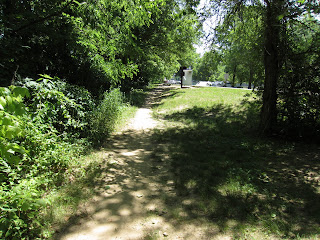I thought my preparation was good this year, especially the fact that I got out and ran the Appalachian Trail on eleven days in the two months before the race. It's one thing to get some hill work included in your workouts, it is quite another to spend time running specifically on the trails you want to be able to cover efficiently. I worked hard on the trail during the race, but I definitely knew what to expect and went through that section in good shape.
Having said that, I'm looking at some of the data from the run yesterday. This graph of my heart-rate, as a percentage of maximum over the race, tells the story ...
 |
| Mike's heart-rate during the JFK-50 |
While seeing my heart rate vary from 85% to 65% of max over 50 miles doesn't bother me, I can't help but think I should have taken it easier on the trail portion early on, and run the canal harder. Of course, depletion of stored energy is probably a big factor in the trend shown in this graph, but I can say that I ate better before and during this run than I usually do during a race.
Mary did a great job of crewing for me yesterday. Here's the picture she took before the start.
 |
| Mike before the race |



















